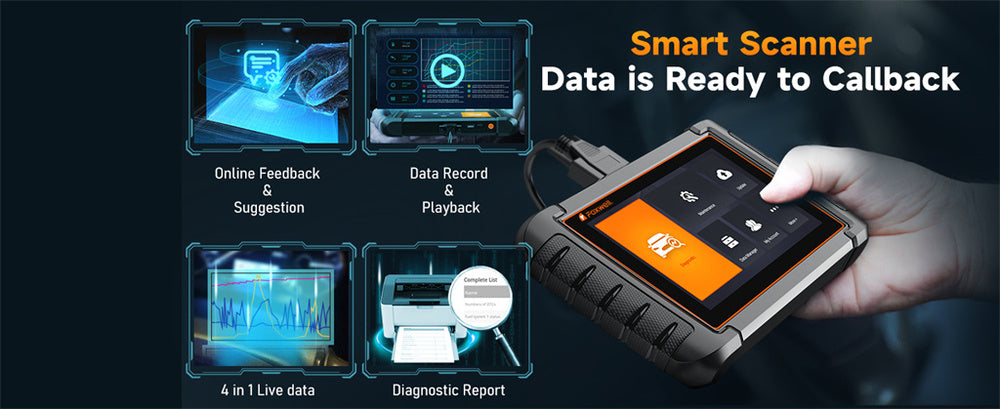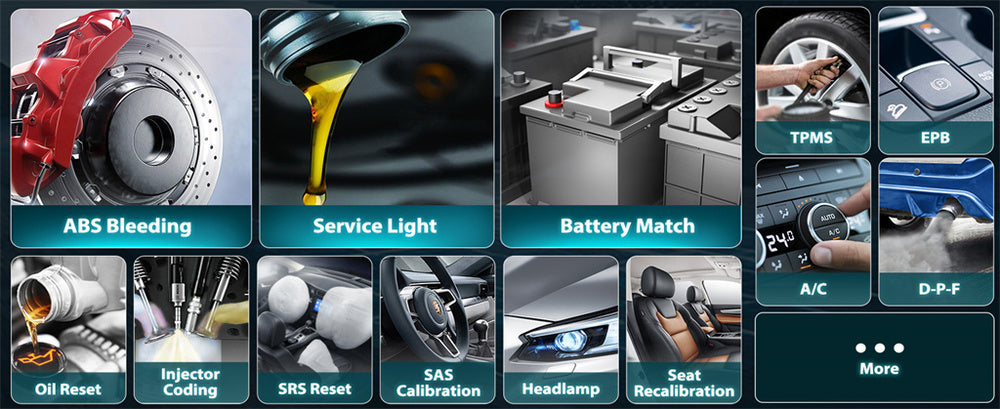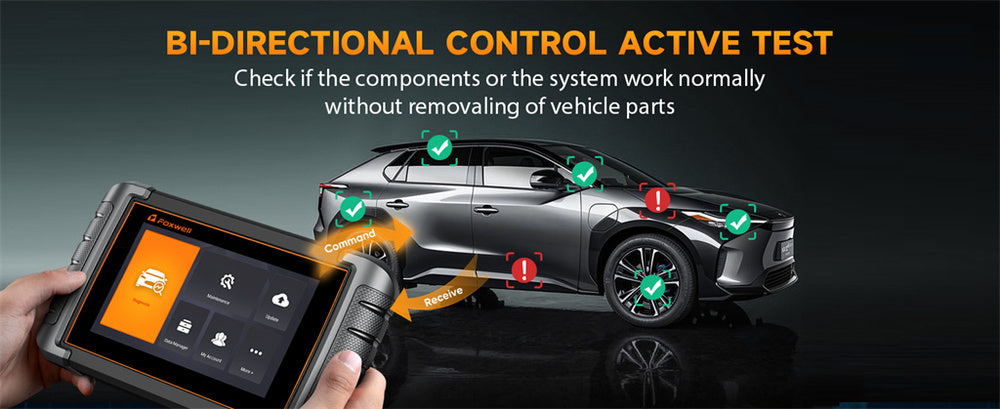So, can an OBD2 scanner detect blown fuses? Unfortunately not. OBD2 scanners are great at reading fault codes from your car's computer system, primarily engine and emission-related components, but when it comes to pinpointing blown fuses, they fall short. Understanding their limitations, as well as the nature of fuses, may still assist in diagnosing electrical issues in your vehicle.
What Are Blown Fuses?

Let's dive deeper into the meaning of "blown fuses." Your car's fuses act like protective barriers that stop excess electrical current from harming its components and can serve as safety switches; when too much current flows through one, it "blows," breaking its circuit and stopping further electrical flow to prevent potential damage to components.
When too much current passes through too quickly, all at once, the fuse "blows," stopping all further electrical current flow until a blowout or circuit breakaway occurs and preventing further electrical flow altogether to protect vehicle components against possible harm or even catastrophe.
Blown fuses can be caused by various factors. Short circuits, for instance, occur when an unexpected path allows electricity to pass unintentionally and overload. Overloaded circuits often result in overloaded fuses as too many devices draw power from one source, thereby exceeding its capacity and ultimately blowing them. Faulty components themselves may also contribute to their demise.
Recognizing the symptoms of a blown fuse is essential. You might notice that certain electrical components in your car, like radio, lights, or power windows, suddenly stop functioning; occasionally, these components might work intermittently, suggesting a fuse is about to blow; other times, you might experience a complete power outage to certain systems which is an indicator that there has been an actual failure of power to that particular system indicating a potential blown fuse.
OBD2 Scanner Limitations in Detected Blown Fuses
OBD2 scanners can be invaluable tools for diagnosing various car issues. Their primary function is communicating with your Engine Control Unit (ECU) and reading diagnostic trouble codes (DTCs), but they cannot directly monitor fuse statuses.
OBD2 scanners can give indirect hints about blown fuses. For example, if a sensor or actuator doesn't seem to work as intended, that could indicate power being interrupted due to a blown fuse; but again, the scanner doesn't directly identify this as being the issue - rather, it is just emphasizing symptoms rather than providing definitive diagnoses.
Tools for Detecting Blown Fuses
As OBD2 scanners don't detect blown fuses directly, additional tools will need to be employed to diagnose this issue. A multimeter or fuse tester is an effective tool in doing this job.
Utilizing a multimeter requires setting it to continuity mode, usually symbolized by a soundwave symbol. When testing for fuse replacement purposes, place each probe of your multimeter on either end of the fuse to be tested - beeping or low resistance readings indicate good condition, while silence or high resistance indicates an issue.
Fuse testers make this process much simpler. Simply insert your fuse into the tester, and it should illuminate if it is intact; no light indicates that its light has gone out and needs replacement.
Interpreting OBD2 Codes
OBD2 codes can provide valuable insight even if they do not directly indicate a blown fuse. Take, for instance, the Foxwell NT1009 car diagnostic tool; it supports all-system diagnostics and offers Bidirectional Control, enabling interaction with various vehicle components to quickly identify and resolve potential issues before they arise.
For example, if the NT1009 reports an oxygen sensor-related code (such as P0135 for oxygen sensor heater circuit malfunction), this could signal a power issue and need to check its fuse(s). While the scanner won't explicitly say which fuse it's related to, this code may prompt you to check its fuse.
If you get an error code like P0300, which indicates a random/multiple cylinder misfire detected, it could be worth checking the fuses related to the ignition system. The NT1009 provides live data and bidirectional tests that help identify whether a misfire is being caused by a lack of power to the ignition coils and injectors, which could indicate a blown fuse.
Deciphering these codes requires some detective work. You must trace back any fault to its source - for instance, by checking the fuse associated with the component in question - demonstrating just how interdependent your car's electrical system is and the importance of taking a systematic approach towards diagnosing.
Preventative Measures
Avoiding blown fuses requires taking proactive steps in maintaining your vehicle's electrical system, including avoiding overloading circuits by not plugging too many devices into one power source or using high-powered equipment that exceeds circuit capacity - for instance, if installing an advanced stereo system with additional components, it should include proper wiring and fuses that will accommodate its extra load.
Regular maintenance of your car's electrical system is also key. Be sure to regularly inspect its battery, alternator, and wiring to make sure everything is in top shape, looking out for signs of wear and tear like frayed wires or loose connections, which could cause short circuits or blown fuses. Also, it would be prudent to periodically check fuses themselves to make sure they're undamaged or haven't become corroded or otherwise compromised.
Proper installation and repair practices are paramount. When adding new electrical components or making repairs, ensure they are done according to industry best practices, such as using the appropriate gauge wire, securing all connections securely, and making sure any added components fit within your electrical system's capacity. If in doubt regarding installation or repair processes, seek professional advice immediately to avoid potential issues.
DIY Diagnosis Vs. Professional Diagnosis
When it comes to diagnosing and fixing blown fuses, finding a balance between what can be accomplished alone and when professional help should be sought is key. For many vehicle owners, inspecting and replacing blown fuses themselves is relatively simple: when an element stops functioning as expected, simply checking and replacing its fuse is often enough a simple solution without needing additional tools or expertise.
A professional diagnosis can often be essential in certain instances. If a fuse has been replaced and then suddenly blows again soon afterward, this suggests an underlying problem that needs to be addressed immediately. Frequent fuse blowouts can indicate short circuits or component malfunctions that require deeper knowledge of your vehicle's electrical system to correctly diagnose and address.
Professional mechanics possess both the expertise and tools to conduct detailed diagnostics, which allows them to trace electrical issues back to their source, identify any hidden problems, and ensure correct repairs are conducted. If your fuse keeps blowing out, using advanced diagnostic tools like the Foxwell NT1009 may help pinpoint its exact cause - whether that is short-circuiting, overloaded circuits, or defective components.
Professional mechanics offer peace of mind. Electrical issues can often be complex and tricky to identify accurately; working with an expert mechanic will ensure the problem is fully addressed, reducing future risk and making sure your vehicle's electrical system remains safe and reliable.

Conclusion
OBD2 scanners can be powerful tools for diagnostic work, but they cannot directly detect blown fuses. Instead, they provide valuable information that may point out a fuse-related issue indirectly. For accurate detection of blown fuses, using a multimeter or fuse tester is highly recommended; regular maintenance and repairs can help avoid fuse issues altogether; do not hesitate to seek professional advice if required.
FAQs
Can an OBD2 scanner read all types of error codes?
OBD2 scanners can typically identify engine and emission system-related error codes; however, advanced scanners such as Foxwell NT1009 may also provide access to more systems within a vehicle - including ABS, airbag, and more.
How often should I check my car's fuses?
For optimal car performance and to prevent electrical problems from developing further, it is recommended to conduct regular checks of your fuses during regular maintenance, particularly if experiencing electrical issues or after installing new electrical components.
What should I do if my fuse keeps blowing repeatedly?
A persistent fuse may indicate a deeper electrical problem, so it is advisable to consult a professional mechanic in order to diagnose and address it effectively.




Leave a comment
This site is protected by hCaptcha and the hCaptcha Privacy Policy and Terms of Service apply.